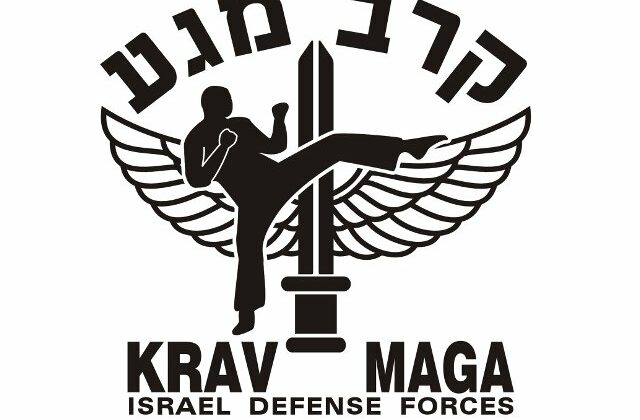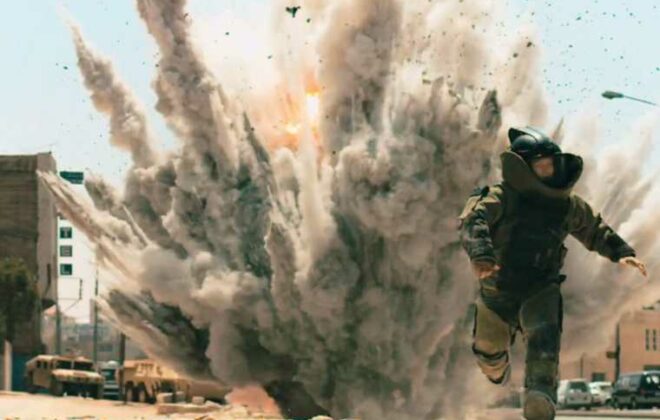THE C.A.R. SYSTEM OF GUNFIGHTING

The CAR system features a bladed stance (the shooter’s weak-side shoulder facing the target), a close-to-body firearm hold, and sighted or non-sighted fire as the situation dictates. This differs from other shooting styles such as the Weaver which feature a more squared stance (i.e. facing the target more squarely) with the pistol held squarely in front of the face and some form of sighted fire.
The CAR system is primarily intended for handgun shooting although it can also be used with long guns, batons, tasers and OC sprays.
– It is a gun fighting technique, not a range application.
– It is a strong, stable, and flexible platform for action.
– It allows quick target acquisition and rapid fire bursts of 4 shots to COM in under 1 second with standard pistols.
– It can be used effectively in small spaces and vehicles.
– It is applicable to team assault situations.
– It provides maximum weapon retention, and also serves as a practical and effective base for contact fighting.
The Center Axis Relock Method of Gunfighting utilizes two main positions or stances as bases for action.
THE HIGH POSITION
The first position is called the High position. It is used for working within confined spaces, from cover, and while moving.
It is a very strong and flexible base for using both short and long weapons such as a handgun, baton, O.C. Spray, shotgun, sub-machine gun, and other weapons.
In the High position, the operator is in a semi-bladed stance, with the weapon held or cradled next to the chest.
The position is achieved by blading towards the threat while also drawing and bringing the gun up to the chest. When the gun is drawn, it should be directed to the threat for firing if needed. Also, as the gun is being brought up, the other hand should be moving to grasp and support it.
This base position reduces the Operator’s silhouette, employs a balanced and stable, yet flexible body stance, and works in harmony with gross muscle movements, gross motor skills, and our natural reactions to extreme stress, one of which, is to bring the arms and hands back to the body, not away from it.
The stance with elbows extended, makes up a natural cradle from which the gun can be fired with both hands or with just the gun hand.
Its framework sets up a circle of control and defense that makes it very difficult for an Aggressor to grab or take possession of the Operators handgun, Baton, or O.C. Spray. That is true regardless of the Operator’s shape, size, or gender.
The circle of control and defense is maintained by rotating towards a threat. In a contact situation, strikes with the elbows and the gun can be made, or the gun can be fired.
The position is comfortable, relaxed, does not pinch or restrict the Operator’s breathing, can be used with full combat gear, and it can be maintained easily for extended periods of time.
Fine motor skills are not utilized or relied on, as they, along with the ability to focus clearly, will be lost to most Operators in a close quarters life and death crisis situation. That is due to the increase in the heart rate, and the activation of the instinctive Fight or Flight response, both of which happen in such situations.
The stability and ease of movement gained by using a bladed stance, along with keeping the gun at the operator’s natural focal point, allows for fast acquisition of multiple targets.
Also, the weak hand is up and ready for use in opening doors,clearing the way, and other tasks.
The thumbs can be placed anywhere, as long as their placement does not interfere with the workings of the gun.
THE EXTENDED POSITION
The second CAR position is called the Extended position. It is used for entry, combat, and assault. It also can be used effectively when seated inside a vehicle.The Extended position or stance, allows for high levels of accuracy, as well as very rapid shooting while moving.
The gun is held naturally and close to the Operators true focus point (normal reading distance). That is an enhancement over stances that employ full arm extension, as doing that takes the sights out of the Operator’s natural focus point. And even more so if the Operator has glasses.
RECOIL CONTROL
With the CAR system, recoil is reduced greatly. This reduction is achieved through the use of either of two main stances, and by „locking“ the muscles and bones of the arms which is accomplished by slightly canting the gun hand.
The canting movement, though slight, greatly enhances stability by changing the alignment and relationship of the muscles and bones in the gun hand arm. That locking action happens naturally and automatically when we fully extended our arms. At full extension, the wrists and lower arms automatically rotate slightly inward.
If the wrists are purposely rotated upward, as with the isosceles and weaver, the arms lose the natural stability and control that results from the canting movement. Also, when the arms are held out straight, they form long levers with the shoulder joints being their fulcrum points. As such, they can be pushed up easily by the upward action of recoil forces, and take the gun off target.
With the use of either the High or Extended CAR positions, the length of the „arm bars“ are reduced by half. Also, stability is improved when the arms are held closer to the body. And when the gun hand wrist is canted some, the bones and muscles in that arm will be naturally and effectively locked and stabilized.
The result will be a great reduction in recoil effects, and a reduction in target reacquisition time.
Also, as the gun is brought up to the Extended position, the gun hand elbow will automatically and mechanically swing out and up, which will further enhance control and stability.
RELOADS
Reloading, and malfunction clearances should be done close to the body with short movements for enhanced speed, control, and stability.
COMBAT RELOAD STEPS
– The Combat Reload is usual made when the gun is empty.
– Using the thumb and index finger, withdraw a magazine with the bullet heads facing the front.
– The index finger should be along the side of magazine with its tip at the top end of the magazine.
– Use the index finger to guide the magazine to the gun hand.
– Lower the gun hand elbow (not the gun), to rotate the grip bottom towards the other hand.
– When the charged magazine is ready for insertion, operate the magazine release and flick the wrist out and back if needed to eject the empty magazine.
– Use the index finger to guide the charged magazine into the hole in the grip, and press it home with the palm of the hand.
TACTICAL RELOAD STEPS
– It is usual made when gun is not empty.
– Withdraw a charged magazine and hold it between the index and middle fingers like a cigarette.
– As that hand nears the gun, drop the gun hand elbow.
– As the hand with the charged magazine reaches the gun, activate the magazine release.
– Withdraw the partially used magazine with the thumb and index finger.
– Insert the charged magazine and press it home in one flowing movement.
– The partially charged (old), magazine which be top heavy from the remaining bullets at its top, will fall sideways into the palm of the hand.
– Secure it.
As with most things, practice will improve performance and allow the Operator to minimize off target time.
C.A.R system shown by Paul Castle
Tags In
Related Posts
Schreibe einen Kommentar Antworten abbrechen
Du musst angemeldet sein, um einen Kommentar abzugeben.
Kategorien
- Defcon3.ch (4)
- Dokumente (1)
- Ausrüstung (10)
- Medien (1)
- Medi & Pflege (3)
- Training (8)
- Krieger (4)




